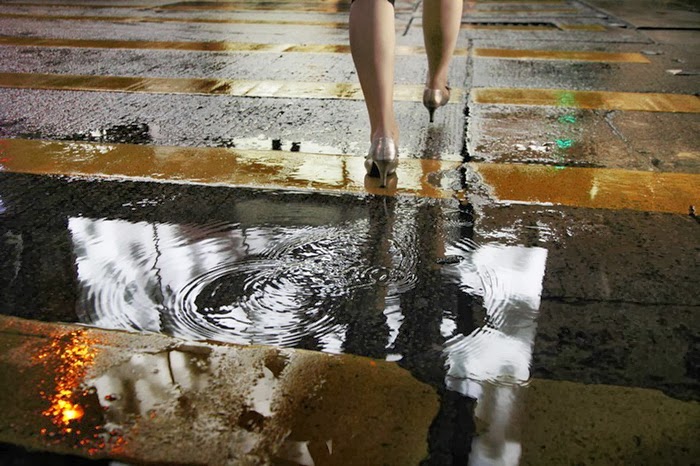►German photographer Menno Aden shot a series of pictures of Berlin interiors looking down from the ceiling – a series he calls "Room Portraits". To create the 'portraits', Aden fastens a camera with a wide-angle lens to the ceiling of a room and takes pictures straight down. Sometimes he uses a monopod or tripod, other times a boom. The camera is often controlled remotely. He takes about 150 pictures from the elevated position before he begins his post-production processing and editing.
"Watching from a higher position on a small space is interesting because I can see someone's 'compressed personality'," said Aden to Slate in an interview. With the third dimension removed, the objects in a room seemed as if they are placed on an architect's floor plan.
Menno Aden started photographing rooms of friends in Berlin, to make portraits of them without actually seeing them. "Many of them had - or still have - an unpretentious life, which is quite typical in Berlin since rents have been quite low", said Aden. Shooting from above, however, can make even the most chaotic room look neat and organized.
"This happens because all the things on the floor such as the furniture flatten into two dimensions", explained the photographer. "I knew about it and I wanted this organized look over chaotic spaces because it makes the viewer feel elevated - sublime - but to be honest I didn't know that an untidy room would look so organized, too".
"When I find a good one [space] I walk through a room, stare at the floor, and note the furniture or the structure of a room. If a room interests me, I'm making plans where I'll put the camera and check the height and material of the ceiling".
Aden doesn't limit himself to private spaces. He has take images of stores, elevators, basements and also parking garages.
"Watching from a higher position on a small space is interesting because I can see someone's 'compressed personality'," said Aden to Slate in an interview. With the third dimension removed, the objects in a room seemed as if they are placed on an architect's floor plan.
Menno Aden started photographing rooms of friends in Berlin, to make portraits of them without actually seeing them. "Many of them had - or still have - an unpretentious life, which is quite typical in Berlin since rents have been quite low", said Aden. Shooting from above, however, can make even the most chaotic room look neat and organized.
"This happens because all the things on the floor such as the furniture flatten into two dimensions", explained the photographer. "I knew about it and I wanted this organized look over chaotic spaces because it makes the viewer feel elevated - sublime - but to be honest I didn't know that an untidy room would look so organized, too".
"When I find a good one [space] I walk through a room, stare at the floor, and note the furniture or the structure of a room. If a room interests me, I'm making plans where I'll put the camera and check the height and material of the ceiling".
Aden doesn't limit himself to private spaces. He has take images of stores, elevators, basements and also parking garages.




















































































